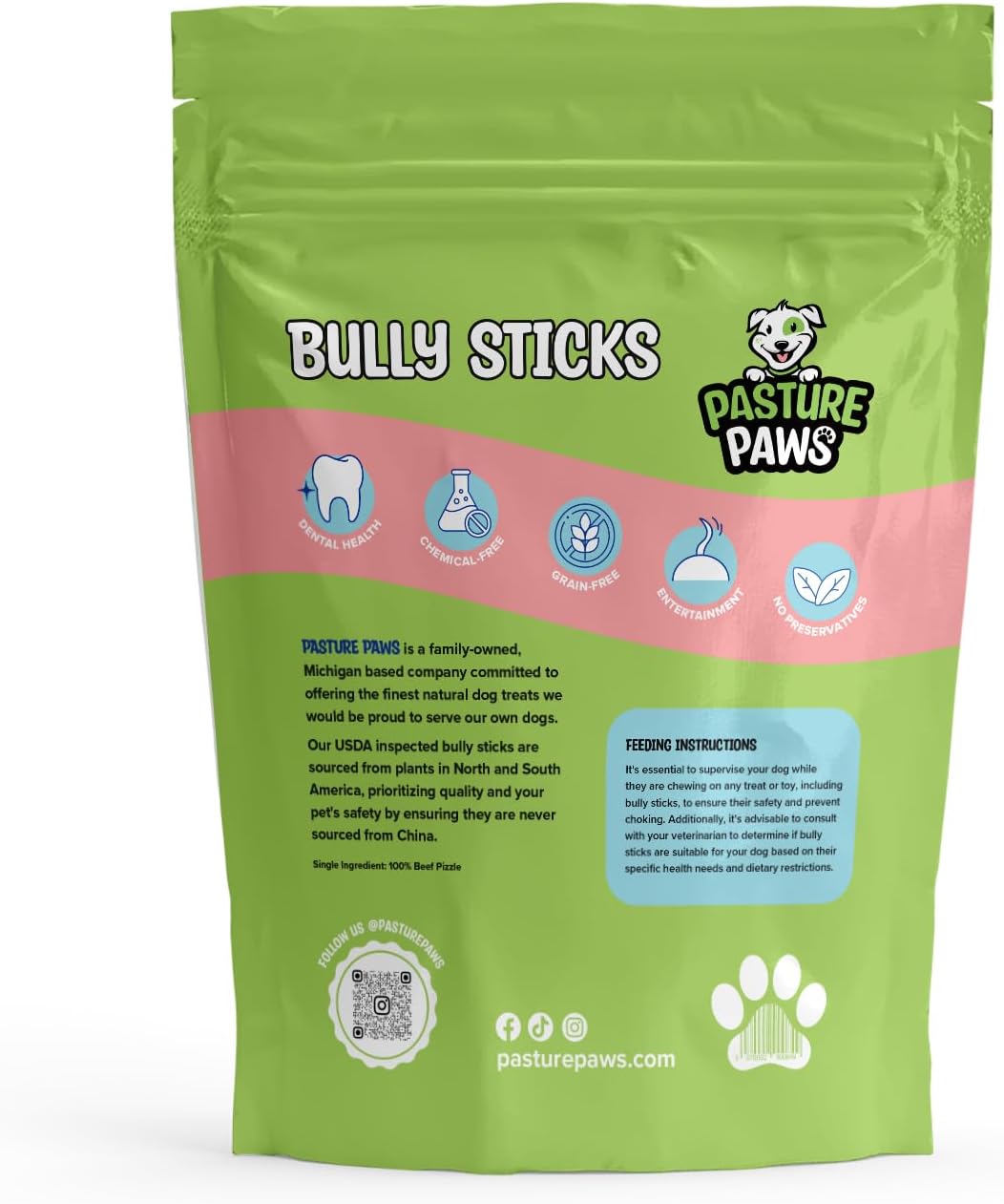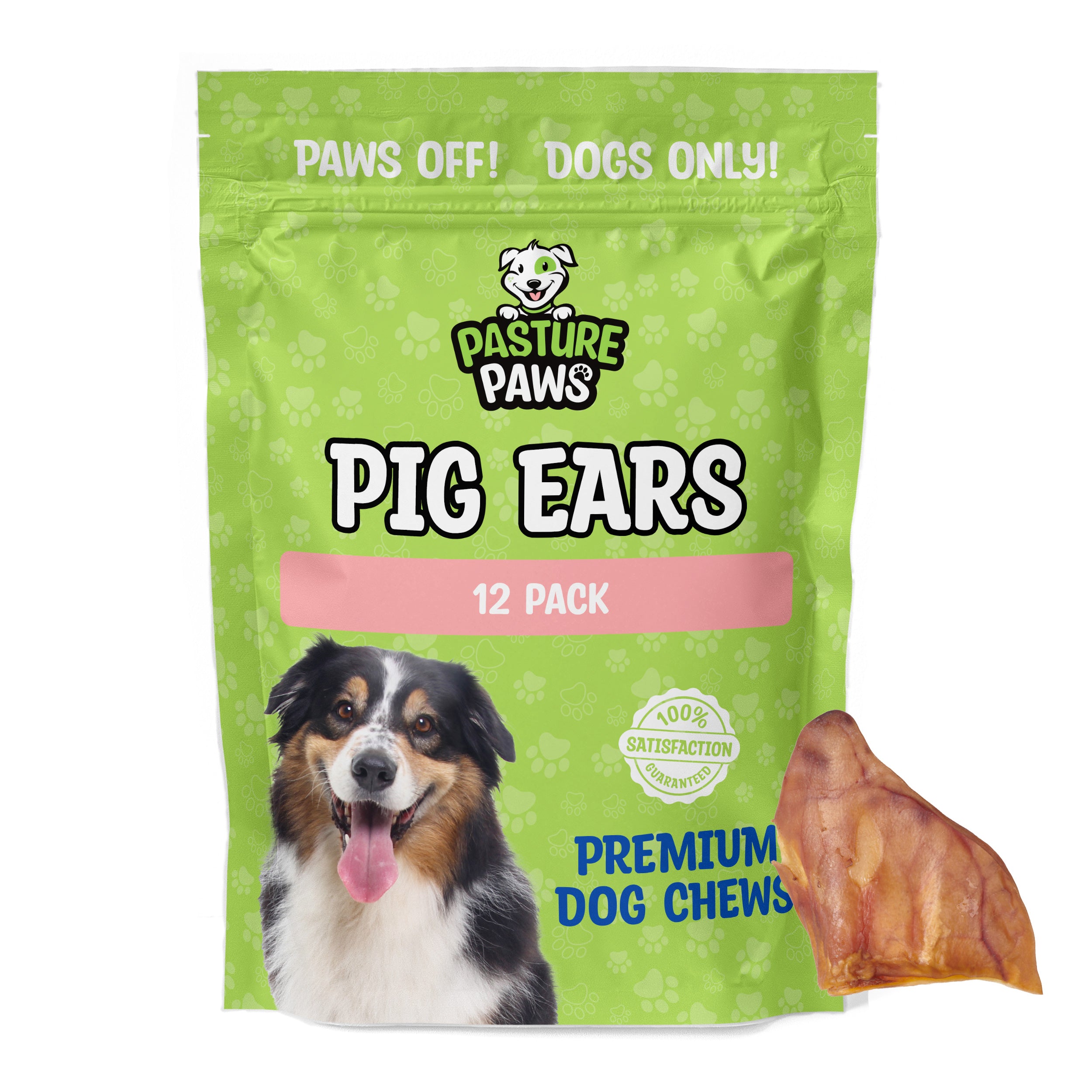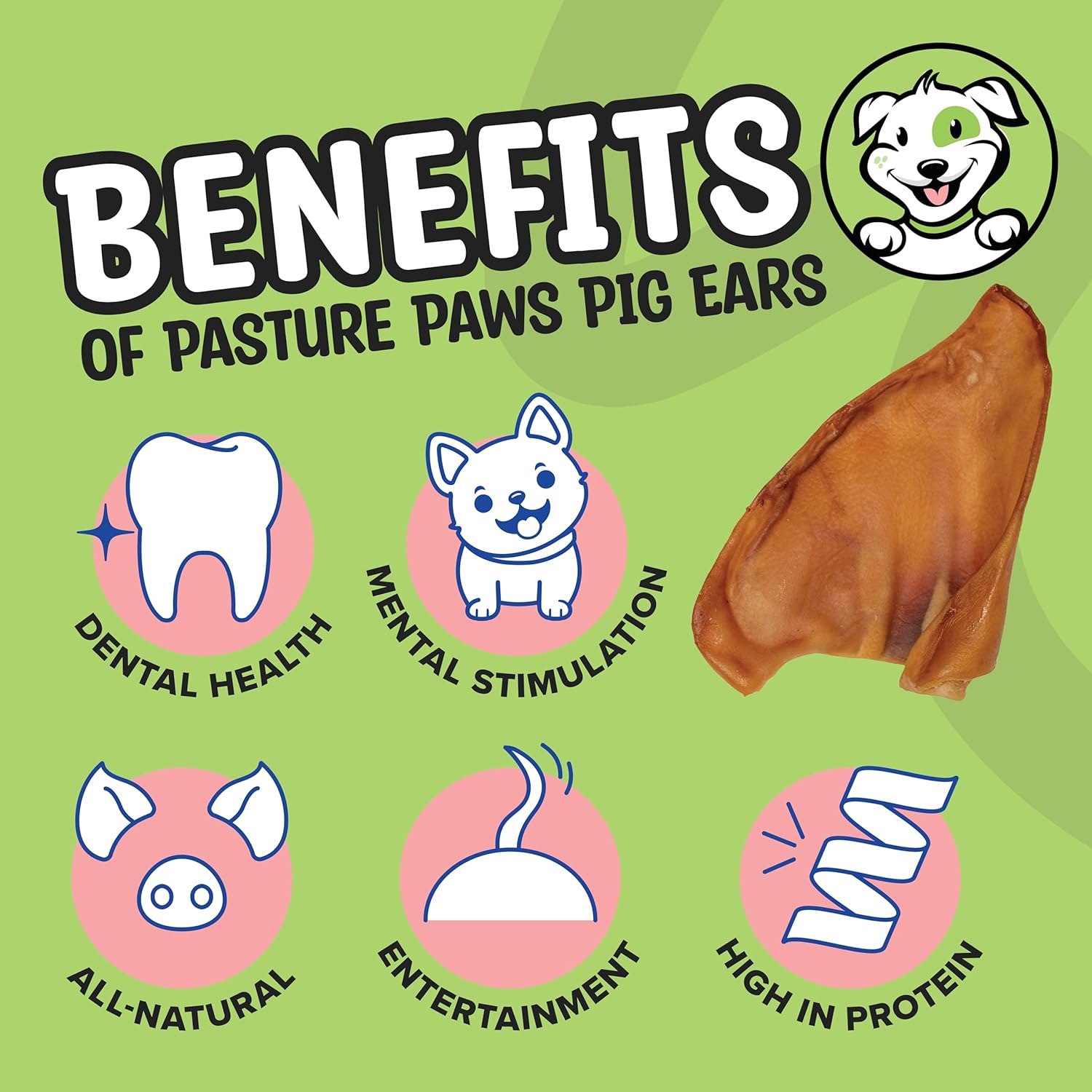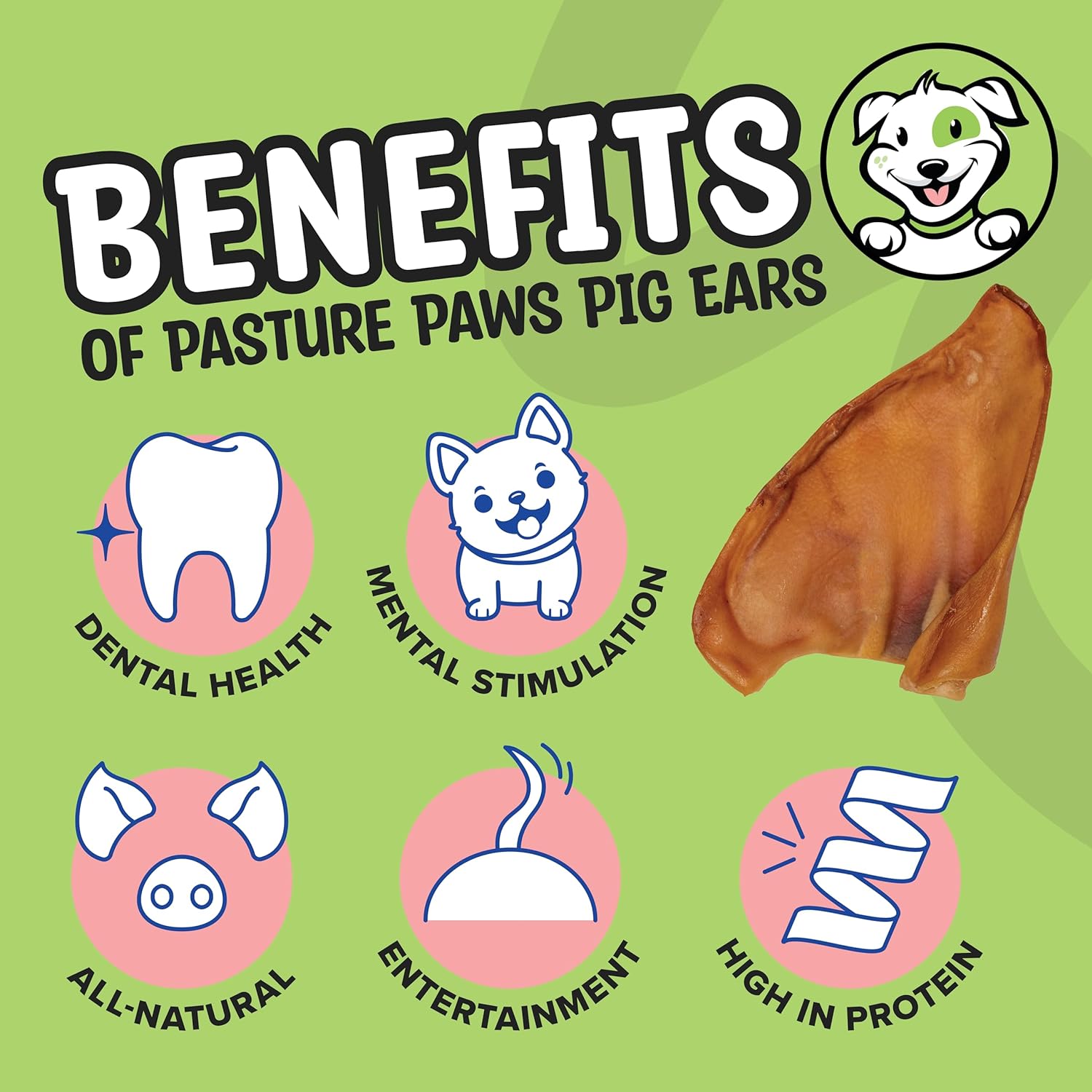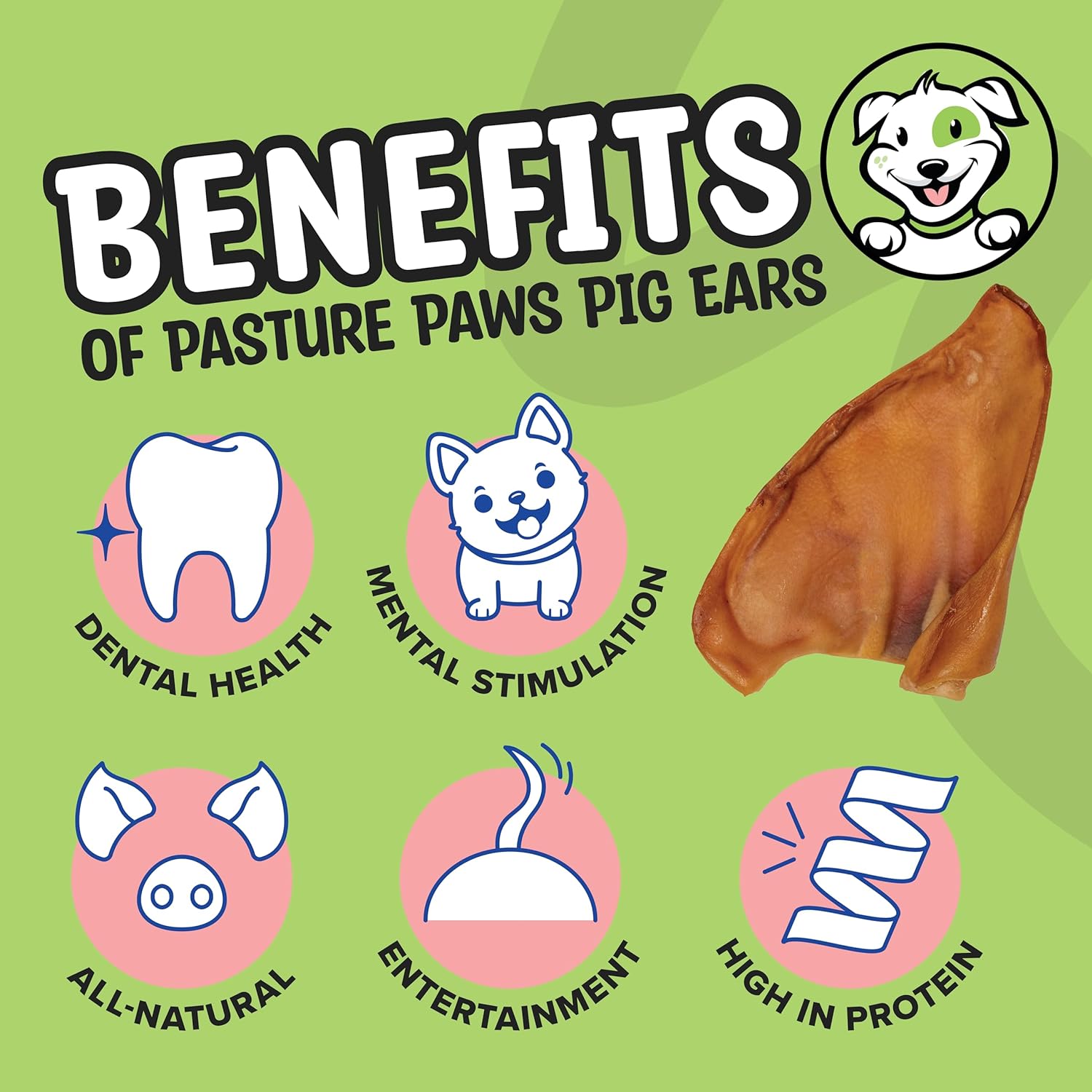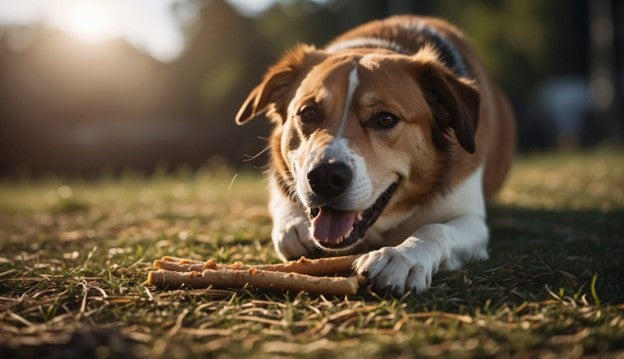Choosing the right rawhide for your dog can be a challenge.
Good rawhide options are natural, free from harmful chemicals, and made from high-quality beef hide. These ensure safety while your dog enjoys hours of chewing.
Many dogs love rawhides, as they provide a satisfying way to keep their teeth clean and their minds engaged.
In this article, you will learn about the best rawhide options available, their benefits and risks, and how to select a safe chew for your furry friend.
By understanding the choices surrounding rawhides, you can make informed decisions that keep your dog chewing happily and safely.
Understanding Rawhide

Rawhide is a popular chew option for dogs, offering enjoyment and potential dental benefits. It’s essential to know what rawhide is, where it comes from, and how it's processed to make informed choices for your pet.
What Is Rawhide
Rawhide is a tough, durable treat made from the inner layer of animal hides, typically from cows or horses.
It can come in various shapes and sizes, like bones, strips, and knots.
Dogs enjoy chewing rawhide because it satisfies their natural urge to gnaw, which can help keep them entertained.
While rawhide is not a necessary part of a dog's diet, it can benefit dental health.
Chewing rawhide can help reduce plaque and tartar buildup. Choose high-quality options to avoid harmful ingredients.
Rawhide Origins
Most rawhide products are made from cow hides, but horse hides are also common. The choice of hide can impact the texture and durability of the chew.
Rawhide has been used as a dog treat for many years, with its origins tracing back to when it was a way to use scraps from the meat industry.
It’s crucial to know where the rawhide originates.
Look for products labeled as natural and free from toxic chemicals.
Some manufacturers may use hides from various countries, affecting safety standards.
Processing and Manufacturing
The process of making rawhide involves several steps.
After the hides are collected, cleaned, soaked, and treated with preservatives.
This is where you must be cautious. Some manufacturers may use toxic chemicals during processing.
To ensure safety, opt for brands prioritizing quality in their processing methods.
Always supervise your dog while they chew to prevent choking or digestive issues.
Selecting a chemical-free rawhide is also essential for your pet’s health.
Benefits of Rawhide for Dogs

Rawhide can provide several advantages for your dog's health and well-being. From supporting dental hygiene to offering mental stimulation, rawhide chews can meet your dog's various needs.
Dental Health Advantages
Chewing on rawhide can help improve your dog's dental health.
As your dog gnaws on the rawhide, it can help reduce plaque and tartar buildup on their teeth.
The texture of the rawhide acts like a toothbrush, scraping off food particles and bacteria.
This action can lead to fresher breath and healthier gums.
Regular chewing can also strengthen the jaw muscles, which promotes good oral health.
Just make sure to select high-quality rawhide to maximize these benefits.
Mental Stimulation and Anxiety Relief
Rawhide chews can serve as a source of mental stimulation for your dog.
When dogs chew, they engage in a natural behavior that can help reduce boredom.
This engagement is crucial for keeping your dog mentally active and content.
Additionally, chewing can be an effective way to relieve anxiety.
A rawhide treat can distract your dog if it feels stressed or restless.
Focusing on chewing can comfort and create a calming effect, helping to ease your dog's mind.
Satisfying Chewing Instinct
Dogs have a strong instinct to chew, and rawhide helps satisfy this natural behavior.
Chewing not only feels good for your dog, but it also provides a constructive outlet for their energy.
When dogs chew, it can prevent destructive behavior often from boredom or excess energy.
Providing rawhide gives your dog a safe and enjoyable way to exercise this instinct.
This helps them stay happy and relaxed, avoiding unwanted behaviors.
Choosing the Right Rawhide

Selecting the right rawhide for your dog takes thought and care. Several factors play a role, including your dog's size, breed, and chewing style. Understanding these elements helps ensure that your dog enjoys their treats safely.
By Size and Breed
Choosing rawhide based on your dog's size and breed is crucial.
Small dogs may choke on large pieces, while large dogs might easily break small chews. To avoid risks, follow these guidelines:
- Small Breeds: Look for chews that are about the size of your dog's mouth but still large enough to prevent choking.
- Medium Breeds: Moderate-sized rawhides that can withstand stronger jaws are suitable.
- Large Breeds: Choose robust, larger rawhides designed for powerful chewers.
Always supervise your dog while they enjoy their chew to ensure safety.
High-Quality Rawhide Selection
Not all rawhide chews are created equal. Selecting high-quality rawhide can reduce health risks. Focus on these factors when choosing:
- Origin: Choose rawhides made in the USA. This ensures stricter safety regulations.
- Ingredients: Avoid rawhides with artificial preservatives and chemicals. Look for natural options.
- Certification: Seek products labeled USDA-certified or with similar quality marks.
Checking the packaging for these indicators can help you make informed choices for your dog's chewing pleasure.
Understanding Your Dog's Chewing Style
Your dog’s chewing style greatly affects which rawhide is best.
Some dogs are aggressive chewers, while others chew gently. Here’s how to assess:
- Aggressive Chewers: Choose thicker, tougher rawhides that can withstand strong jaws. These chews last longer and reduce the chance of breakage.
- Gentle Chewers: Softer, more pliable options may be suitable. These are less likely to cause dental damage.
- Supervision: Regardless of chewing style, constant supervision is essential. This prevents choking and allows you to remove any small pieces.
Safe Usage and Supervision for Rawhide

Safety and supervision are essential when giving your dog a rawhide. You should always watch your dog while it chews, and it is crucial to recognize signs of distress. You must also know when to replace or remove rawhide products to keep your dog safe.
Supervising Chew Time
Supervising your dog during chew time is very important. Always watch them closely to ensure they are chewing safely. If they start to gulp chunks or chew aggressively, this can lead to choking or blockages.
Set a time limit on how long your dog can chew. Shorter chew sessions help prevent them from swallowing large pieces.
Create a comfortable space for your dog to enjoy their chew. Make sure it’s free from distractions, toys, or food that might cause them to rush.
Tip: Use a timer to alert you when to check on your dog.
Signs of Rawhide-related Distress
Knowing the signs of rawhide-related distress can prevent serious issues. Look for behaviors like excessive pawing at the mouth, drooling, or gagging. These might indicate that something is stuck in their throat.
Remove the rawhide immediately if your dog shows signs of pain, such as whining or refusing to chew.
Monitor their bathroom habits as well. Diarrhea or changes in stool can indicate an adverse reaction to rawhide. Always consult your vet if you notice severe symptoms or if your dog seems unwell.
When to Replace or Remove Rawhide
You should regularly check the condition of the rawhide. If it becomes too small, soft, or breaks into small pieces, it’s time to remove it. These scenarios can turn a simple chew into a choking hazard.
Replace rawhide if your dog loses interest. Chewing on stale or old treats is less enjoyable and can expose them to harmful bacteria.
Consider using different types of chews to keep your dog engaged. Safe options can include No-Hide chews, which are free of harmful chemicals. Always prioritize your dog’s safety and comfort when selecting chews.
Alternatives to Rawhide

If you’re looking for safe and enjoyable options for your dog, several alternatives to rawhide can meet their chewing needs. These choices can also promote dental health while providing a tasty experience.
Natural and Synthetic Alternatives
Natural chews like bully sticks, antlers, and pig ears are popular for their taste and durability. Bully sticks are made from dried bull penis, providing a long-lasting chew that is high in protein.
Antlers are also tough and can last for months. Thanks to their hard texture, they are a good choice for aggressive chewers.
On the synthetic side, chews made from rubber or nylon can be beneficial. These come in various shapes and flavors, making them enticing for your dog.
Chicken jerky is another excellent option, offering a flavorful treat that is usually easy to digest.
Specialized Dental Chews
Dental chews reduce plaque and tartar buildup while keeping your dog’s teeth clean. For example, dental bones often contain ingredients that help fight bad breath and improve oral hygiene.
Look for products labeled as vet-approved as they undergo testing for safety and effectiveness. Brands like Pasture Paws produce chews that are effective and tasty for dogs.
Incorporating specialized dental chews into your dog’s routine can provide multiple benefits while giving them something to chew on.
Homemade Chewable Treats
Creating homemade chewable treats allows you to control ingredients and avoid additives. You can mix peanut butter with oats or pumpkins to make delicious treats.
Frozen treats are also popular. Fill a Kong toy with peanut butter and freeze it for a fun, lasting chew.
Additionally, consider using a trachea filled with nutritious ingredients. These are easy to digest and can be made at home with minimal cooking.
Always monitor your dog when giving homemade treats to ensure they enjoy them safely.
Product Selection and Recommendations
When choosing rawhide chews for your dog, it’s important to consider quality, ingredients, and where the product is made. The right choices can enhance your pet’s chewing experience while ensuring safety and health benefits.
Recommended Rawhide Chews
Select durable and safe rawhide chews. Look for high-quality options like the Pasture Paws Rawhide Rolls. This brand stands out for using a single sheet of rawhide, which means no fillers.
It’s ideal for small to medium breeds and ensures quality through American sourcing. Popular choices often lack artificial colors and preservatives, providing a more natural chewing experience.
Ingredient Transparency
When selecting rawhide products, ingredient transparency is key. Check that the products are free of artificial colors and preservatives. High-quality rawhides often promote healthier chewing and help maintain dental health over time.
Buying American-made rawhide ensures stricter safety standards. For example, many brands have clear labeling that outlines their ingredient sources. This gives you confidence that your pet is enjoying a safe treat. Look for natural flavors and ingredients that your dog can digest easily.
Country of Origin and Manufacturing
Rawhide chews made in the USA are preferred for their quality and safety standards. Chews from USDA-certified facilities typically undergo rigorous inspections. This process helps ensure that your dog receives a safe product.
Choosing rawhide from known manufacturers like American brands often means you are supporting local businesses. Pay attention to origin labels, as they inform you about the sourcing of the raw materials. You can find great options like the 9-10" Rawhide Retriever Roll highlighting quality and promoting dental health.
Always aim for products that clearly state their country of origin and avoid those with vague labels.
Conclusion
Choosing the right rawhide for your dog is essential for its safety and health. Opt for natural, chemical-free options, and always supervise your dog while it chews to prevent choking or digestive issues.
Consider our 9-10" Rawhide Retriever Roll, made from premium-quality rawhide, to promote dental health while satisfying your dog’s need to chew.
Remember, some dogs may have allergies or sensitivities, so always monitor for any adverse reactions when introducing new treats.
Check the manufacturer’s practices to ensure they prioritize cleanliness and quality, as high-quality rawhide can be a safe and enjoyable treat for your dog if chosen wisely.
Incorporating rawhide into your dog’s routine can help relieve boredom and improve dental health. Balance these treats with regular meals and other forms of stimulation to maintain overall well-being. Visit Pasture Paws to explore our selection of high-quality rawhide products and give your dog the best!
Frequently Asked Questions
Important considerations must be made when giving rawhide to dogs. This section addresses common questions about the benefits, risks, and safe practices related to this practice.
Which alternatives to rawhide are considered safe for dogs?
Several safe alternatives to rawhide exist, including bully sticks, dental chews, and natural bones. These options can provide similar chewing satisfaction without some risks associated with rawhide.
Look for treats labeled as all-natural and check for any added chemicals or preservatives.
What age is appropriate for puppies to start chewing on rawhide?
Generally, you should wait until your puppy is six months old before introducing rawhide. This timing helps ensure they have strong enough teeth and digestive systems to handle chews safely.
Always consult your veterinarian if you have questions about your puppy’s diet.
How frequently should dogs be given rawhide chews?
To avoid potential digestive issues, limit rawhide treats to a few times a week. Monitor your dog’s chewing habits and adjust based on how they handle the treats.
Keeping chews as an occasional reward helps prevent overconsumption.
What should be considered when choosing rawhide for canines?
When selecting rawhide, look for high-quality products that do not contain harmful chemicals.
Also, check for size and thickness to match your dog's chewing strength.
Regularly supervise your dog while they chew to ensure they're safe and not swallowing large pieces.

